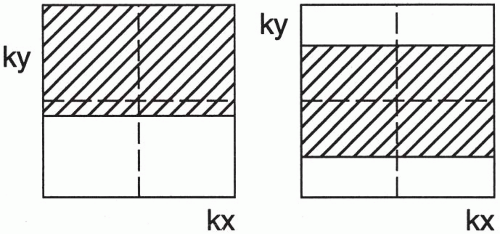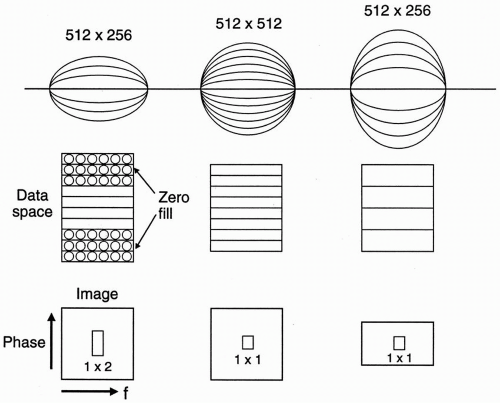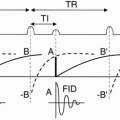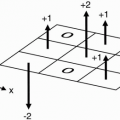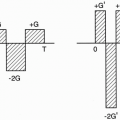New Scanning Features
Introduction
In this chapter, we discuss some of the more recent techniques used by newer MR scanners with more advanced software. The following is a summary of these features and their functions:
To increase speed
Fractional number of excitations (NEX)
Fast spin echo (FSE)
Fast gradient-echo techniques
Parallel imaging (discussed in the next chapter)
To reduce TE
Fractional echo
Fractional radio frequency (RF)
To increase resolution (without time penalty)
Asymmetric field of view (FOV)
To reduce aliasing
No phase wrap
No frequency wrap
To increase coverage
Phase-offset RF pulses
To achieve contiguous slices
Contiguous slices
3D acquisition
To achieve saturation
Spatial saturation
Spectral (chemical) saturation
To increase signal-to-noise ratio (SNR)
Low bandwidth
Reduce motion
Periodically rotated overlapping parallel lines with enhanced reconstruction (PROPELLER)
Remember that FSE and fast gradient-echo techniques are separate pulse sequences, whereas the other features can be added to any pulse sequence.
Fractional NEX
See Figure 23-1, and also refer to Chapter 13.
Mechanism
Only a portion of k-space is used (e.g., ½ NEX, ¾ NEX [actually, the number of phase encodes Ny is reduced, not NEX]). Reconstruction is based on inherent symmetry of k-space along the phase axis.
Slightly more than half of k-space is used (called overscan) for phase correction.
The center of k-space is usually included because it contains the strongest signals.
Advantages
Increased speed (caused by reduced Ny)
Disadvantages
Decreased signal-to-noise ratio (SNR)
May increase artifacts
Applications
Fast Spin Echo
For more detailed discussion, refer to Chapter 19.
Mechanism
Use of multiple 180° refocusing pulses
Filling the k-space with multiple lines per TR (per “shot”)
Echo train length (ETL) denotes the number of 180° pulses (e.g., 2, 4, 8, 16, etc.)
Advantages
Reduces scan time by a factor of ETL (2, 4, 8, 16, etc.)
Spin-echo contrast without reduction in SNR (SNR can actually be increased by using a very large TR)
Decreased magnetic susceptibility—useful in imaging near metal (particularly at higher bandwidth [BW])
Disadvantages
Reduced coverage (caused by the presence of long TEs).
Cerebrospinal fluid may be bright on proton density images. This is a result of weighted averaging effect of later echoes. To reduce this undesirable effect, use a shorter ETL (e.g., ETL = 4), shorter TE (higher BW).
Fat is bright on T2-weighted images because of elimination of diffusion-mediated dephasing caused by the closely spaced 180° pulses as spins diffuse through regions of different magnetic field strength (e.g., fat and water).
Magnetic susceptibility effects (e.g., hemorrhage) are reduced because of decreased dephasing from closely spaced (refocusing) 180° pulses, which leave little time for spins to dephase as they diffuse through regions of magnetic nonuniformity.
May increase heating as a result of rapid train of RF pulses.
Applications
Fast scanning
High resolution (e.g., internal auditory canals)
Increase SNR with reasonable acquisition time
Single breath-hold technique
Fractional Echo
See Figure 23-2.
Mechanism
Only a fraction of the received echo is sampled (feasible because of the symmetry of the echo about TE and symmetry of k-space along frequency axis).
Advantages
TE can be reduced
May decrease flow artifacts and susceptibility effects
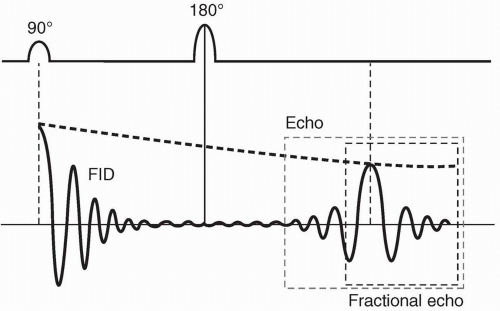 Figure 23-2. Fractional echo. Note outer dashed box is the full echo while the inner dashed box represents the fractional echo. |
Applications
T1-weighted images
To reduce flow artifacts and magnetic susceptibility effects
Fractional RF (90°, 180°, or Partial Flip)
See Figure 23-3.
Mechanism
Same principles as in fractional echo (a fraction of the RF pulse is included in the pulse cycle because of the symmetry in the pulse).
TE can be reduced accordingly.
Features. The features are similar to those of fractional echo.
 Figure 23-3. Fractional RF (90° or 180° or partial flip). |
Asymmetric FOV
See Figure 23-4.
Mechanism
Rectangular FOV is used (FOV is typically reduced in phase direction because Ny is typically less than Nx).
May get square or rectangular pixels.
Advantages
With rectangular FOV, we can obtain resolution of, say, 512 × 512 matrix in the time it takes to perform a 512 × 256 acquisition.
Increases speed while maintaining resolution.
Useful when the anatomy being imaged is asymmetric (smaller) in phase direction (e.g., the spine).
Disadvantages
May cause wraparound in phase direction
Applications
Spine
Extremities
Abdomen
No Phase Wrap (Phase Oversampling)
Stay updated, free articles. Join our Telegram channel

Full access? Get Clinical Tree


